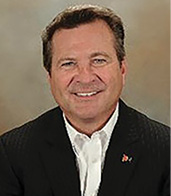It was the end of 2019 when my fire company began meeting to discuss a new pumper—which became two pumpers. Money was cheap back then and, as a company, we decided we would do what needed to be done to swing the purchase of two new pumpers.
Then, we entered 2020. By March 2020, schools were closing, and students were learning remotely. Companies across the country switched to a remote working model. COVID-19 started to take its toll. In some states, nonessential businesses were told to close their doors. Mask mandates became the norm. Lines outside supermarkets were not uncommon while store owners worked to control the number of people inside at one time. As 2020 ended, we asked fire apparatus manufacturers about what people should expect as they ordered new rigs in 2021. Unless local protocols dictated otherwise, those interviewed felt that departments should expect typical buying experiences. Boy, did that change!
2021 is when I first recall starting to hear about supply chain issues and how they were impacting businesses. The “chip problem” got a lot of attention. So, we were building two trucks at this point. Everything stayed pretty on schedule. We were well into 2021 when we hit our first snag. The trucks would be delayed because of some supply chain issues for parts that were not kept in stock. Ultimately, both new pumpers landed at the end of 2021—we got through it relatively unscathed. Timing is everything.
But, the same could not be said for other departments as we entered 2022. Toward the end of 2021 and as we entered 2022, the supply chain disruption received more and more attention. It wasn’t only full-size fire apparatus that were impacted. We were having trouble building command vehicles and ambulances as well. Commercial chassis have been hard to come by. And, when 2023 arrived, the norm was to expect up to 36-month delivery times—and sometimes even 48 months. Purchasing cycles have been disrupted. “Buy it now” was the advice Ricky Riley, president of Traditions Training and Fire Apparatus & Emergency Equipment Advisory Board member, had during a recent Podcast, “Navigating the Current Fire Apparatus Purchasing Environment.” He added, “Don’t wait a day. If you need to buy a fire truck, just go buy it.” His point was simply that you can’t tell what’s coming down the road at this point.
So, as we enter 2024, where are we? Is there any indication that we are starting to come out of this? Will lead times decrease? What is the status of the supply chain and, as we look forward, what’s the best we can hope for?
INDICATORS
Inflation has impacted growth in the market, according to Paul Darley, president and CEO of W.S. Darley & Co. “The market for new fire apparatus is down 10%, as we predicted last year,” he says. “I don’t see the cost of fire apparatus coming down, but I would expect increases in line with inflation numbers.” The numbers he is referencing, for W.S. Darley, are from the Bureau of Labor Statistics, citing inflation for pump manufacturers of more than 16%. “In 2023, it softened a bit, but the last 12 months is still up over 8.5%.” He expects the market to retract another 5% based on the overall acceleration of ordering over the past two years.
It’s not easy to definitively define where the fire apparatus market is presently. With what the industry has gone through over the past few years, you never know what to expect. Though the market may be down, both Mike Virnig, president of REV Fire Group, and Bob Schulz, president of Pierce Manufacturing, believe that it remains strong. “The market and demand continue to be strong,” says Virnig. “We continue to experience inbound orders at record pace among all our brands. Long lead times have meant many fire departments and communities have accelerated purchase cycles to fill needs over the next two or three years.”

“We feel optimistic that 2024 will bring back more stability to the manufacturing and build process.”
—Mike Virnig, President, REV Fire Group
“The North American market for fire apparatus grew approximately 50% from 2020 to 2022, and order activity remains strong,” says Schulz. “At the same time, the industry experienced macro headwinds with supply chain, unprecedented inflation, and a competitive labor market.” He continues, “While we address the ever-evolving macro environment challenges, demand for fire apparatus remains strong, and Pierce maintains a healthy backlog. While high demand can exacerbate current challenges, it also propels us to innovate and find solutions faster.”
TRENDS
Market trends are being influenced by a variety of things, including the aforementioned indicators. Virnig, Darley, and Schulz all identified different trends. For example, long lead times have led to many fire departments changing up their replacement cycles, deciding to “buy now,” as Riley advised. Buying now doesn’t necessarily mean delivered now. Darley states, “Customers are looking for quick delivery options.”
Quick delivery options are also driving a trend toward custom chassis vs. commercial chassis. According to Virnig, “Many departments are opting to purchase custom chassis apparatus as opposed to commercial chassis. The trend has shifted over the past couple of years due, in part, to commercial chassis delivery challenges and the fact that many fire departments have been forced to wait extended periods of times to be able to purchase new apparatus.”
Schulz cites a variety of trends not directly related to the current purchasing atmosphere. In this case, he explains that manufacturers are addressing the demand for fire apparatus equipped with advanced technologies. “This includes enhanced communications and onboard diagnostic systems, such as Pierces Clear Sky™ telematics, which aids with proactive maintenance and increased apparatus uptime.”

“We are cautiously optimistic supply chain improvement will continue and inflationary pressures will subside.”
—Bob Schulz, President, Pierce Manufacturing
Crew safety is another area Schulz has identified as a trend. “There is rising demand for apparatus with advanced safety features, including collision avoidance systems like HAAS Alert, 360-degree camera systems, advanced braking systems, side roll protection systems, electronic stability control, and Pierce’s carcinogen awareness and reduction to exposure (CARE) program.”
Virnig adds, “We’re also seeing a continued interest in firefighter cancer mitigation strategies with easy-to-clean interior surfaces, seat materials, air decontamination, and storage solutions for PPE.”
Other trends identified by Schulz include apparatus that are easily customized to meet unique needs, with a focus on fleet uniformity, and a demand for more compact fire apparatus, especially in urban settings. Multifunction apparatus continue to be popular, and environmental considerations are impacting purchasing. “As with many sectors, the fire industry is becoming more environmentally conscious in an effort to meet municipal sustainability goals,” he says. “There’s a growing interest in fire apparatus powered by alternative fuels, such as electric or hybrid engines, that reduce emissions and operating costs.”
SUPPLIER CHALLENGES
It is important to remember that as frustrating as it can be as apparatus purchasers to be adjusting to long lead times and other challenges, it is equally frustrating to the suppliers. Darley cites three challenges for his company:
Supplier challenges and moving delivery schedules: “We have overpurchased inventory to meet our customers’ needs, but it’s still problematic in some areas.”
Rising costs: “New 2026 emissions will be an issue. Trucks will cost more—some estimates are as much as $100,000. Another significant issue is where to locate the larger components, such as SCRs, which will now be moved to the pump area.”
Softened labor market: “The labor market has softened, and while finding skilled labor is a bit of a challenge, it’s not as bad as it was two years ago.”
Darley adds that the supply chain issues are settling down a bit, but there are still pockets of challenges like long lead times on engines. “Honda and Briggs & Stratton are both quoting over 12-month delivery,” he says.

“The supply chain issues are settling down a bit, but there are still pockets of challenges.”
—Paul Darley, President and CEO, W.S. Darley & Co.
Virnig also explains how supply issues have challenged suppliers, but are improving. “Across all our brands, we have near-record backlogs,” he says. “We continue to experience supply chain issues, though we have seen improvement in recent months. We have a strong procurement and supply chain team who are tirelessly working to mitigate any shortages on a daily basis.”
At Pierce, the company has invested in itself to address market growth. “The North American market’s significant growth means orders are outpacing shipments,” he says. “We’ve invested heavily in our Wisconsin facility and other campuses, improving operational flow and increasing throughput without compromising quality.” It invested not only in infrastructure but in automation as well, adopting technologies like robotic painting and automated fabrication to improve efficiency. “Our aim isn’t to replace our workforce,” he comments, “but to complement it. Regardless of infrastructure or equipment investments, our commitment to our team drives us.”
POSITIVE BUT CAREFUL
There are times when you must throw all the predictions out the window, and for the past few years, that has been the reality. Challenges remain, but if things go the way they look like they are going, then things will continue to stabilize in the market. That does not mean that the 36-month delivery times will disappear during 2024, but there should be improvement. “We feel optimistic 2024 will bring back more stability to the manufacturing and build process,” says Virnig. “As we continue to become more efficient in the build process, and supply chain issues decline, we have seen more throughput and delivery of finished apparatus to end users.”
Schulz explains the difficulty in forecasting what’s to come in 2024. “I wish we had a crystal ball to determine when all the macro headwinds will subside,” he says. “That said, there are positive signs. We continue to see steady improvement in overall supply chain. We are cautiously optimistic that supply chain improvement will continue, and inflationary pressures will subside. Additionally, we’ve had success growing and retaining our team. In 2023, we added more than 250 new jobs within our newly expanded facilities.”
Collaboration between manufacturers and suppliers will continue to be important as well. “Even though the signs are positive, it’s essential for our Pierce team to remain as adaptable as we have over our history, continue to closely evaluate and collaborate with our suppliers, and focus on team member growth and development,” according to Schulz.
CHRIS McLOONE, editor in chief of Fire Apparatus & Emergency Equipment, is a 30-year veteran of the fire service currently serving as a safety officer and is a former assistant chief with Weldon Fire Company (Glenside, PA). He has served on past apparatus and equipment purchasing committees. He has also held engineering officer positions, where he was responsible for apparatus maintenance and inspection. He has been a writer and editor for more than 30 years.

